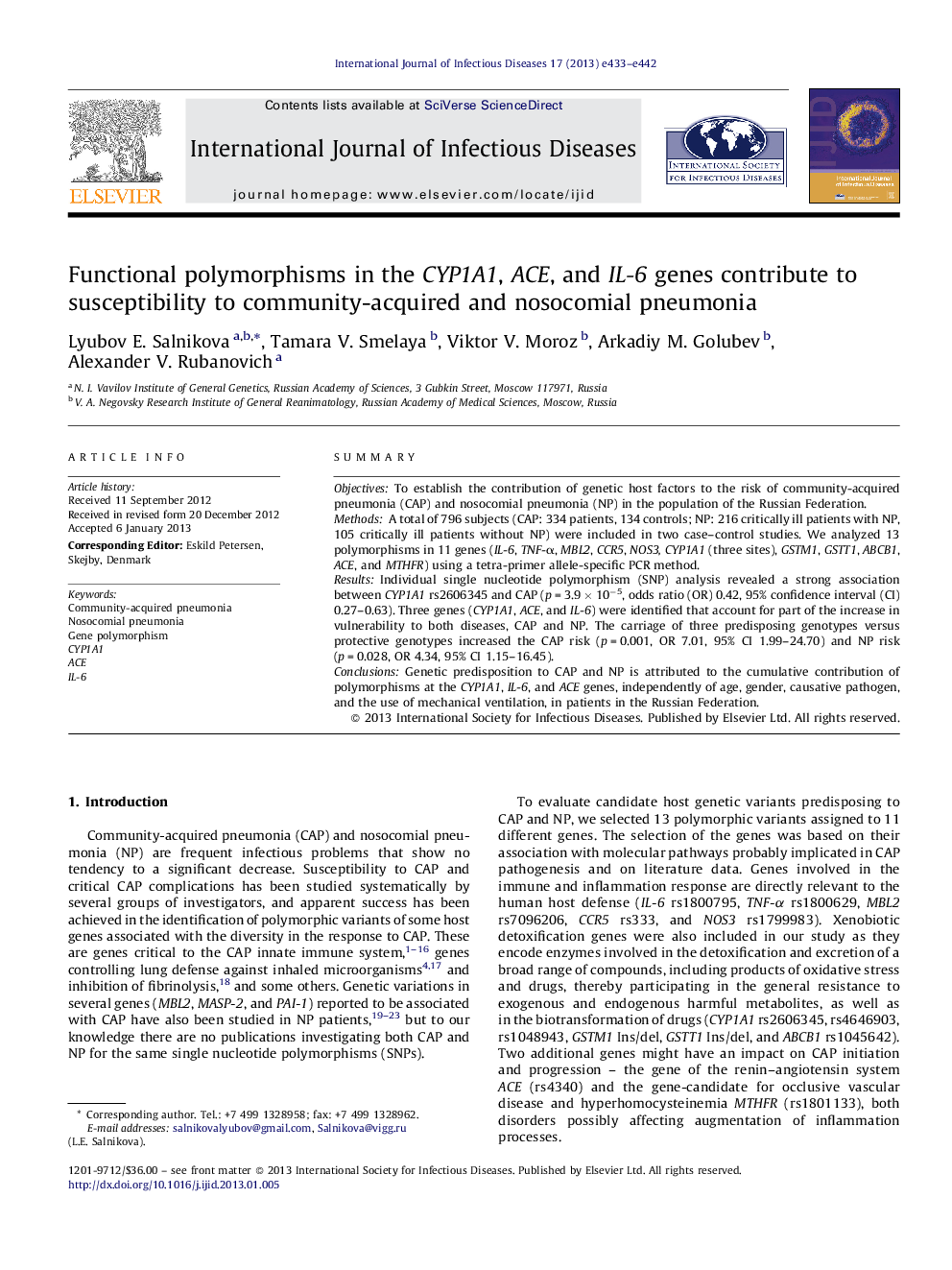| Article ID | Journal | Published Year | Pages | File Type |
|---|---|---|---|---|
| 3362999 | International Journal of Infectious Diseases | 2013 | 10 Pages |
SummaryObjectivesTo establish the contribution of genetic host factors to the risk of community-acquired pneumonia (CAP) and nosocomial pneumonia (NP) in the population of the Russian Federation.MethodsA total of 796 subjects (CAP: 334 patients, 134 controls; NP: 216 critically ill patients with NP, 105 critically ill patients without NP) were included in two case–control studies. We analyzed 13 polymorphisms in 11 genes (IL-6, TNF-α, MBL2, CCR5, NOS3, CYP1A1 (three sites), GSTM1, GSTT1, ABCB1, ACE, and MTHFR) using a tetra-primer allele-specific PCR method.ResultsIndividual single nucleotide polymorphism (SNP) analysis revealed a strong association between CYP1A1 rs2606345 and CAP (p = 3.9 × 10−5, odds ratio (OR) 0.42, 95% confidence interval (CI) 0.27–0.63). Three genes (CYP1A1, ACE, and IL-6) were identified that account for part of the increase in vulnerability to both diseases, CAP and NP. The carriage of three predisposing genotypes versus protective genotypes increased the CAP risk (p = 0.001, OR 7.01, 95% CI 1.99–24.70) and NP risk (p = 0.028, OR 4.34, 95% CI 1.15–16.45).ConclusionsGenetic predisposition to CAP and NP is attributed to the cumulative contribution of polymorphisms at the CYP1A1, IL-6, and ACE genes, independently of age, gender, causative pathogen, and the use of mechanical ventilation, in patients in the Russian Federation.
